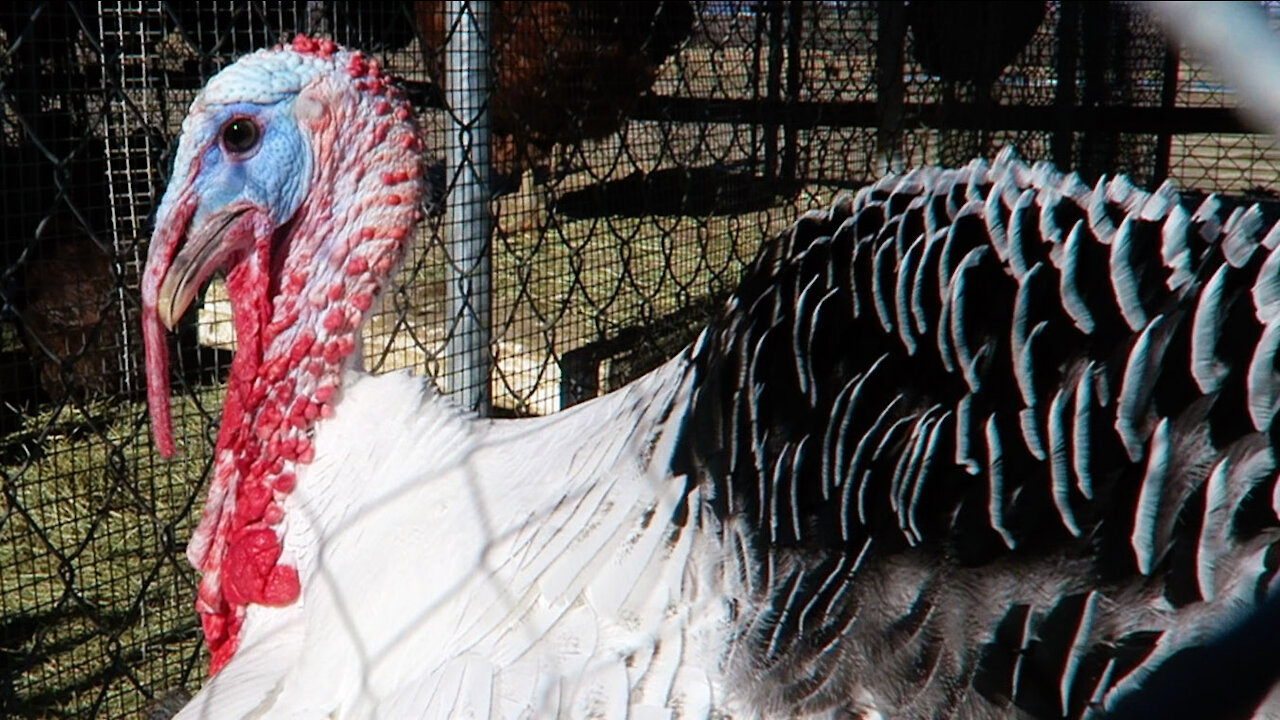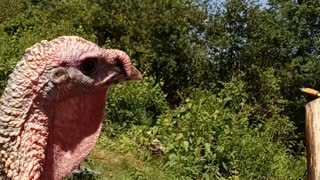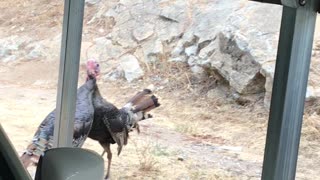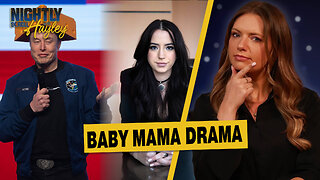Premium Only Content

Turkey turns blue-in-the-face
These are wild turkeys. Did you know that although we may not understand their gobble-language, we might actually be able to get some idea of what they’re thinking, or at least how they’re feeling, just by looking at the changing color of their heads?
It’s true. The color of a turkey's head and throat changes depending on its mood. When a turkey is excited, the head will turn blue. When it is feeling stressed, his head will turn bright red. It may turn back to white when the turkey is feeling calmer. The color shifts and changes many times throughout the day as he feels various levels of stress and relaxation.
What’s also cool is that fact that the retinas of turkey’s eyes have seven different types of photoreceptors. These “artificial brighteners” make other turkeys glow a bright blue color to other turkeys who can see ultraviolet light.
Turkeys are highly social, affectionate and love to play. They love to be stroked, petted and cuddled. They will remember your face, and if they like you, they will come up to you to greet you.
Notice how the male turkey in this video puffs up his body and spreads his tail feathers like a peacock. There must be a female around he his trying attract!
And finally, here’s some lingo for you.
A male turkey is called a tom or a gobbler, a female turkey a hen, and a baby turkey a poult or chick. A young male turkey is called a jake and a young female is called a jenny. A group of wild turkeys is called a flock, a group of domesticated turkeys is commonly referred to as a rafter.
-
 0:21
0:21
AmplifiedLIFE
1 year ago $0.01 earnedThe Waters Above and Below
58 -
 0:18
0:18
lisabennington
3 years agoCurious turkey
46 -
 1:53
1:53
Okparak14
3 years agoTurkey president
40 -
 0:12
0:12
Maryrose10
3 years agoRare turkey fight
621 -
 1:28
1:28
Chkhaidze
3 years agoTurkey bird funny dance
251 -
 1:56:28
1:56:28
Anthony Rogers
5 days agoEpisode 359 - The Dark Side of Disney
19.1K1 -
 58:27
58:27
BonginoReport
10 hours agoMusk’s 13th Alleged Baby Mama’s Anti-Privacy Tour - Nightly Scroll w/Hayley Caronia (Ep.17)
159K82 -
 2:11:32
2:11:32
Michael Franzese
9 hours agoLindy Li: DNC Insider Reveals Dark Truth About Biden, Kamala and Pelosi
65.7K63 -
 1:17:20
1:17:20
Kim Iversen
11 hours agoFrom Tesla-Smashing to Jasmine Crockett-Stanning: Woke Unhinged Edition
128K81 -
 LIVE
LIVE
TheSchleppy
1 day ago $0.82 earned✨TheSchleppy✨27 HR STREAM SCHEDULE 1 NOW!
41 watching